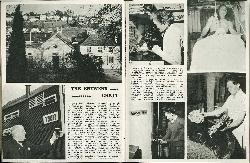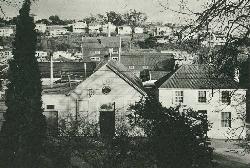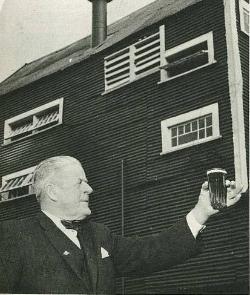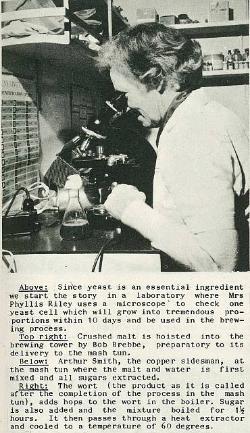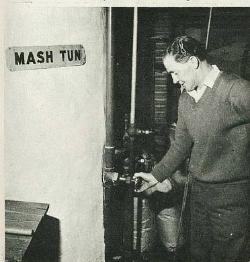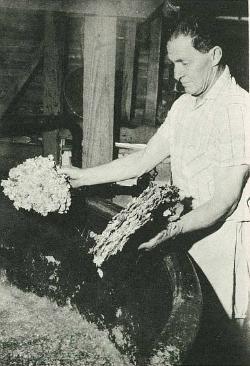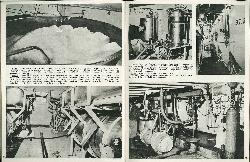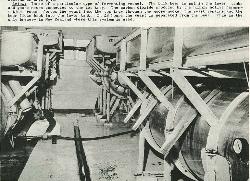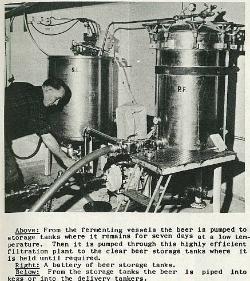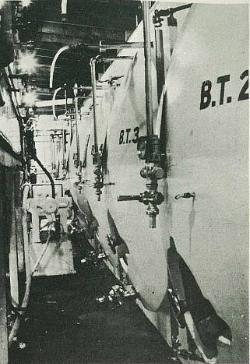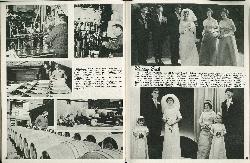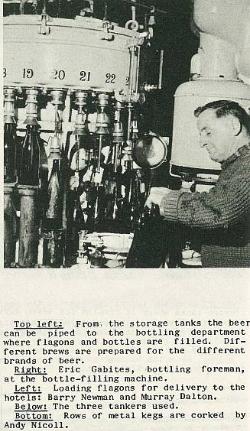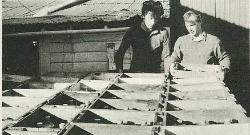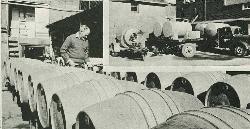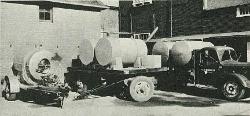52
The Brewer's.............Craft
"Beer, beer, glorious beer....." So go the words of a well-known drinking song and in New Zealand in particular, where the consumption of this "glorious" beverage has few equals throughout the world, these words are echoed by hundreds of thousands of devotees. There's an art in brewing', an art that's been developed over many hundreds of years. In Nelson this art has been carried on for well over 100 years, and for 92 years by the Harley family.
The picture above is of the Raglan Brewery in Cathedral Square, which was taken over by the Harley family in 1855, and occupies a site of three acres. In 1945 an amalgamation took place between the Nelson breweries owned by the Duncan and Harley families and the business has been carried on from that time as Nelson Breweries Ltd. In a year, about 660,000 gallons of beer are brewed on the premises and distributed to hotels within the area bounded by Collingwood, Murchison and Nelson. The Customs Department levies 6s a gallon duty on the beer, so that in a single year this brewery produces nearly £200,000 in customs revenue. Since this is an extremely interesting process and since the product is so dear to so many hearts, we felt you might like to know something of how beer is brewed. So we've covered the story for you in picture form.
the managing director of the company, Mr J. A. (Auty) Harley, approves a sample.
53
Since yeast is an essential ingredient we start the story in a laboratory where Mrs Phyllis Riley uses a microscope* to check one yeast cell which will grow into tremendous proportions within 10 days and be used in the brewing process.
Crushed malt is hoisted into the brewing tower by Bob Brebbe, preparatory to its delivery to the mash tun.
Arthur Smith, the copper sidesman, at the mash tun where the malt and water is first mixed and all sugars extracted.
The wort (the product as it is called after the completion of the process in the mash tun), adds hops to the wort in the boiler. Sugar is also added and the mixture boiled for 1 1/2 hours. It then passes through a heat extractor and cooled to a temperature of 60 degrees.
54
From the extractor the cooled licruid flows into a gyle (fermenting vessel) where the yeast is added and the fermentation starts. It continues in the gyle for 30 hours before being piped to other fermenting vessels for longer fermentation. Now that's what we call a head. There are 2450 gallons in this gyle.
Three of a particular type of fermenting vessel. The bulk beer is put in the lower tanks and goose necks connected to the top tray. The carbon dioxide produced by the highly active fermentation process forces the yeast into the top tray through the goose necks. The yeast remains and the beer flows back into the lower tank. In 48 hours the yeast is separated from the beer. This is the only brewery in New Zealand where this system is used.
55
From the fermenting vessels the beer is pumped to storage tanks where it remains for seven days at a low temperature. Then it is pumped through this highly efficient filtration plant to the clear beer storage tanks where it is held until required.
A battery of beer storage tanks.
From the storage tanks the beer Is piped into kegs or into the delivery tankers.
56
From; the storage tanks the beer can be piped to the bottling department where flagons and bottles are filled. Different brews are prepared for the different brands of beer.
Eric Gabites, bottling foreman, at the bottle-filling machine.
Loading flagons for delivery to the hotels: Barry Newman and Murray Dalton.
The three tankers used.
Rows of metal kegs are corked by Andy Nicoll.


